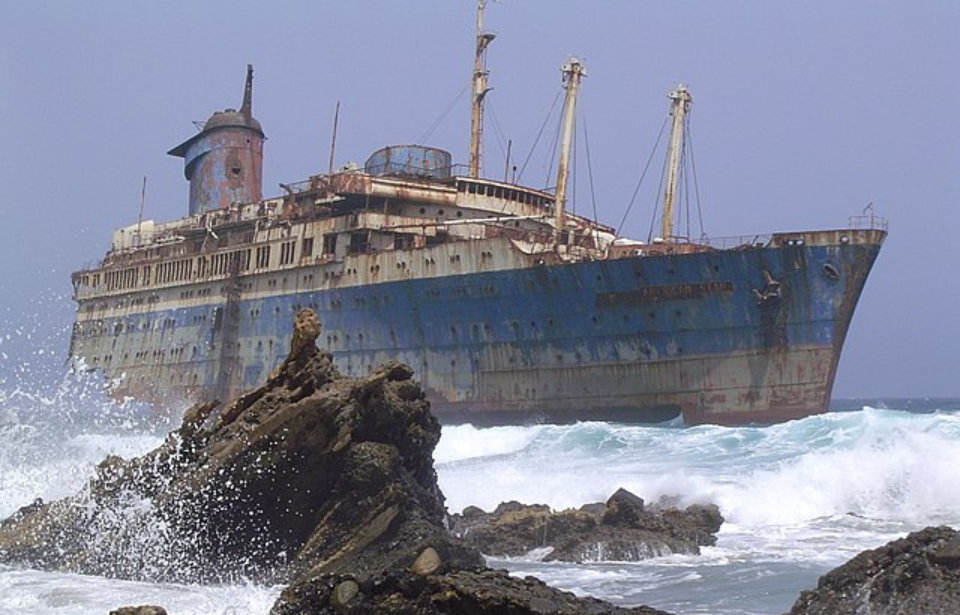Located just off the coast of the Canary Islands, beneath the surface of the Atlantic Ocean, sits the remains of a once-modern ocean liner. Known by a number of different names, including the SS America, the vessel served both civilians and the US military before meeting its untimely end just before the turn of the century.
Construction of the SS America
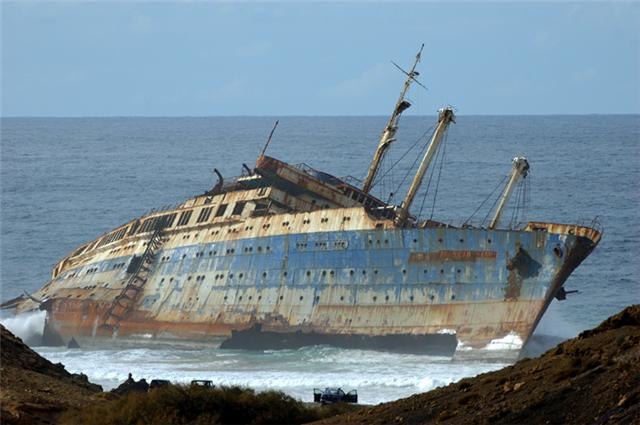
The SS America was laid down in August 1938 in Newport News, Virginia. Constructed by the Newport News Shipbuilding and Drydock Company, the vessel was one of the few ocean liners at the time to feature an interior designed by women. With the aim of creating a more sophisticated and lighthearted atmosphere, the decision was made to have the vessel feature a contemporary design, which differed from other liners.
Along with giving the interior of America a unique look, the vessel was also constructed with low funnels to make it appear more modern. These, however, caused large soot deposits to gather on the deck, leading them to be reworked almost immediately after the ship entered service.
Launch of the SS America
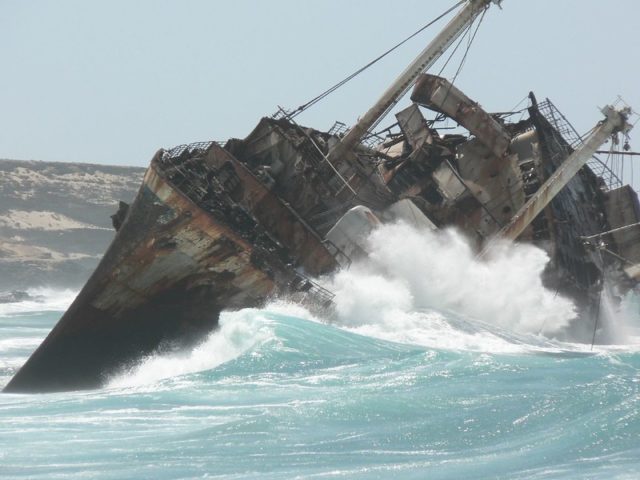
The SS America launched on August 1939 and was sponsored by First Lady Eleanor Roosevelt, the wife of then-US President Franklin D. Roosevelt. She set off on her maiden voyage a year later, touting the ability to hold 543 passengers in cabin class, 418 in tourist class and 241 in third class, along with 643 crew members.
Given Europe was in the midst of the Second World War, America‘s name, along with that of her operating company, United States Lines, were painted especially large on both sides of the hull. Two American flags were also added, to ensure both the Allied and Axis powers would recognize the ocean liner as a neutral vessel, as the United States hadn’t yet entered the conflict.
When sailing at night, America was fully illuminated, and in January 1941 was secretly fitted with a degaussing cable to protect against sea mines. For added protection, the vessel also avoided sailing her intended route across the North Atlantic, as German U-boats were known to be beneath the ocean’s surface.
Service with the US Navy during World War II
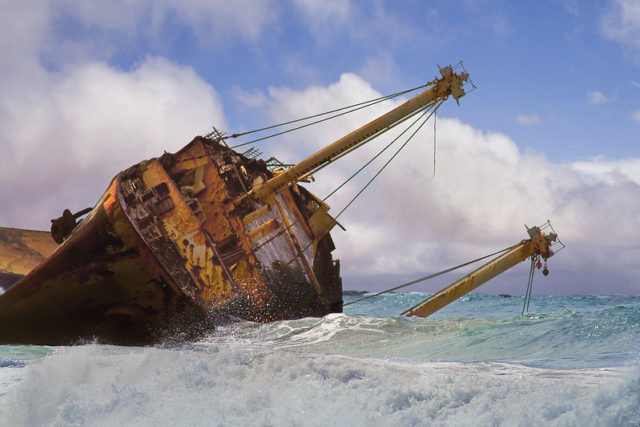
In May 1941, the SS America was called into service as a troop-carrying ship by the US Navy. She returned to Newport News, where she underwent refitting and was re-designated the USS West Point (AP-23). Along with the addition of life rafts, the vessel was painted gray, had several anti-aircraft weapons installed and had its carrying capacity increased to 7,678.
Around this time, it was discovered that two German spies, Franz and Erwin Siegler, had been working onboard America and were passing information about ship movements and defense preparations in the Panama Canal. They were found to be part of the Duquesne Spy Ring, headed by Frederick “Fritz” Joubert Duquesne. The group’s efforts were uncovered by the FBI, leading to the largest espionage conviction in US history.
Throughout World War II, West Point conducted a number of convoy journeys. Following Germany’s surrender, she also took part in Operation Magic Carpet, bringing home thousands of American soldiers from the European front. Following this, she was transferred to the Pacific Fleet, as the country’s war with Japan was still ongoing.
During her service with the Navy, West Point transported over 350,000 troops, the largest of any troopship during WWII, as well as prisoners of war (POWs), civilians, USO entertainers, Red Cross workers and children. She was also awarded the Asiatic-Pacific Campaign Medal, the American Defense Service Medal, the World War II Victory Medal and the European-African-Middle Eastern Campaign Medal.
Return to service as an ocean liner
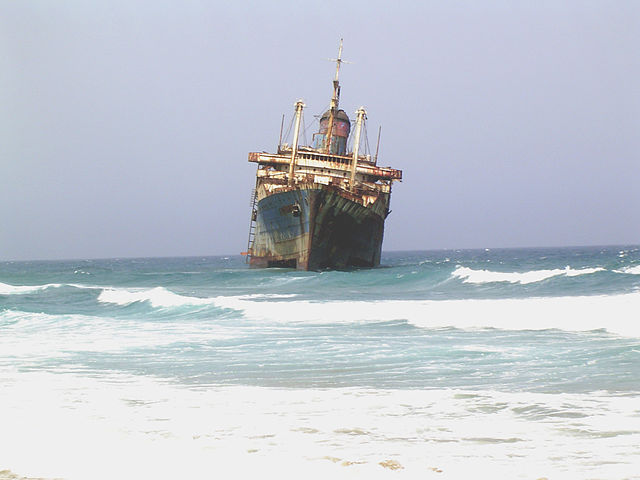
Upon returning to civilian service, the vessel regained her SS America designation and sailed her delayed New York-Le Havre-Bremerhaven-Cobh route, as well as trips to the Caribbean. In November 1964, she was sold to the Greek-owned Chandris Group, which added 350 passenger cabins and renamed her the SS Australis. The company was interested in cashing in on the European-Australian emigrant run, which was incredibly lucrative.
In 1978, the Chandris Group sold Australis to New York‘s Venture Crusie Lines, who failed to keep the once-pristine ocean liner in good shape. Under the company’s control, the vessel, which once again returned to her America designation, suffered from leaking pipes, plumbing backups, worn mattresses and soiled linens, pungent smells coming from the kitchen, a poor paint job, piles of trash, and cockroach and rat sightings.
America‘s condition was so poor that, on one trip, passengers “mutinied” and forced the ship’s captain to return to New York, having only just passed the Statue of Liberty. A second attempt was made to set sail, but an additional 200 passengers disembarked via Staten Island. This led to $2 million in claims, which, along with a 6/100 rating from the US Health Department, forced Venture Cruise Lines to sell America.
America was repurchased by the Chandris Group for $1 million and renamed Italis. She was sold shortly after to the Intercommerce Corporation for conversion into a prison ship, but this never occurred. Instead, she fell into the hands of Silver Moon Ferries, who later sold her for scrap. While the merchant put down a deposit for half the necessary amount, they defaulted on payments and were forced to pull out of the project.
Wrecked in the Canary Islands
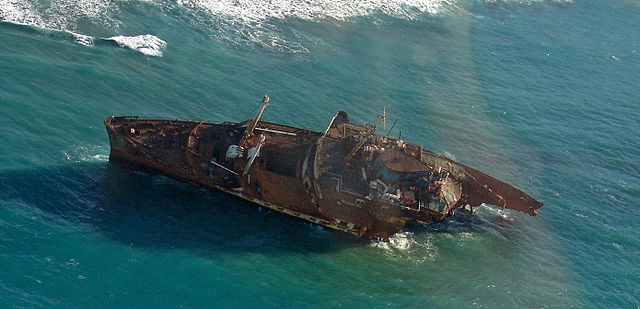
In October 1992, the ocean liner, now known as the SS Alferdoss, was sold to a company interested in turning her into a five-star hotel ship off the coast of Phuket, Thailand. She was renamed the SS American Star, with plans made to transport her from Greece to the South Pacific. During the 100-day journey, the towlines attached to the vessel broke, leaving her adrift in the Atlantic Ocean.
American Star ran aground on Playa de Garcey, Fuerteventura, Canary Islands. Discussions between the towing company, her owners and insurance firms swiftly got underway, during which time she was left to the effects of nature. Within 48 hours, the surf split her in two, leading her to be deemed a total loss.
Over the years, American Star suffered increased damage. Her stern section collapsed into the water, while the cargo hold was completely eroded by 2004. The port side of the bow collapsed, as did the remaining funnel. By October 2006, the wreck had almost completely collapsed in on itself on the port side, with the vessel completely sinking below the water half a year later.
By 2013, American Star was no longer visible on Google Maps. Six years later, a dive team investigated the shipwreck, noting the hull and superstructure had completely disintegrated. Filled with marine life, the only sections that remained intact were the boiler, the anchor chains on the forecastle and the aforementioned funnel.
More from us: Archaeologists Were Amazed to Find This Odd Artifact on a Massive Shipwreck
Prior to sinking below the waves, American Star fell victim to looters, who created a zipline to travel to the wreck and collect valuables. Some tried to swim out to the location, but the majority who attempted this fell victim to the strong current, which sucked them under.
